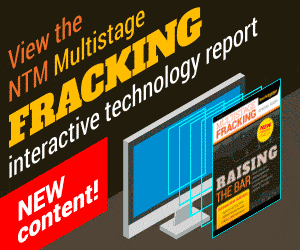Catch 22: Moderate Investment In Big Data, Despite Potential For Operational Efficiencies In Oil & Gas, Says DNV GL
- Published: Thursday, 17 March 2016
- Author: Daily News
Only one in five oil and gas companies see themselves as highly digitalized today. However, close to half of senior oil and gas professionals1 (45 per cent) already see solid or high potential for big data and analytics to transform the operating efficiency of the industry in 2016, according to research by DNV GL, the leading technical advisor to the oil and gas industry.
The research among over 900 senior oil and professionals reveals that despite it’s potential, only 36 per cent plan significant or moderate investment in big data and analytics in 2016.
The IT related technology expected by most respondents to have significant or high investment is cyber security attack/prevention (44 per cent), followed by automation/remote operation (43 per cent).
“Early adopters are emerging, but many in the industry are still at early stages of maturity in data analytics and data-based decision making. The industry is in something of a ‘Catch 22’ situation; close to half of seniors in our industry see solid or high potential for big data and analytics to transform the industry’s operating efficiency in 2016. However, investment seems to be lagging just when we need it most. Our in-depth interviews point to cost constraints and uncertainty about the cost-saving potential of digital technologies as the key reasons,” says Nada Ahmed, senior engineer at DNV GL – Oil & Gas.
“As for other areas of innovation, collaboration could prove essential to bridge this digital gap and ensure experience transfer in the conservation of data, efficiency drivers and ways to ultimately leverage the opportunities big data represent for the industry,” adds Ahmed.
DNV GL has identified key opportunities to reduce costs by optimizing day-to-day operations2:
- Condition monitoring for more effective maintenance and inspection regimes, dictated by specific, industry, historical and real-time data. Replacing planned maintenance with preventive maintenance, driven by early warnings from sensor data, can significantly reduce downtime.
- Instant information from wells can provide timely decisions on underperforming wells and other potential issues that, if not dealt with, could lead to enormous costs.
- Detecting anomalies while drilling and during operation can also lead to more effective decisions for cost savings.
Elisabeth Tørstad, CEO of DNV GL – Oil & Gas, says: “Our customers say that a number of challenges need to be addressed to capitalize on the opportunities within Big Data; robust strategies to capture, manage and utilize critical data, access to reliable, trustworthy data, and stringent security to minimize security breaches. We are working with the industry to help it manage the risks and leverage the opportunities associated with digitalization.
“Cyber-attacks on in the oil and gas industry have grown in stature and sophistication in recent years, making them more difficult to detect and defend against, and costing companies increasing sums of money to recover from,” adds Tørstad.
- A New Reality: the outlook for the oil and gas industry in 2016 is an industry benchmark study from DNV GL, the leading technical advisor to the industry. Now in its sixth year, the program builds on the findings of five prior annual outlook reports, first launched in early 2011. During October and November 2015, it surveyed 921 senior professionals and executives across the global oil and gas industry. More than a third (35 per cent) of respondents work for oil and gas operators, while 60 per cent are employed by suppliers and service companies across the industry. The remaining respondents come from regulators and trade associations. The companies surveyed vary in size: 40 per cent had annual revenue of US$500m or less, while 14 per cent had annual revenue in excess of US$10bn. Respondents were drawn from publicly-listed companies and privately-held firms. They also represent a range of functions within the industry, from board-level executives to senior engineers.
- ‘Digitalization in the Oil & Gas Sector’ is published by DNV GL and based on in-depth interviews with 25 key stakeholders (operators, rig owners, IT suppliers and consultants).
-NTM-



